#saint nicholas of bari
Explore tagged Tumblr posts
Text

Saint Nicholas of Bari
20x30in. Acrylic, graphite, and ink on canvas
Kacper Abolik, 2023
2 notes
·
View notes
Text






Basilica di San Nicola, Bari
#basilica di san nicola#saint nicholas#basilica#romanesque#architecture#church architecture#church#catholic church#bari#puglia#apulia#italia#italytravel#italy#europe#southern italy#travel#photography#travel photography#history#photographers on tumblr#culture#art#art photography#architecture photography
37 notes
·
View notes
Text

Medieval bull sculpture by the main door of the Basilica of Saint Nicholas in the Old Town of Bari, Puglia region of Italy
Italian vintage postcard
#the basilica of saint nicholas#sepia#photography#vintage#nicholas#sculpture#postkaart#basilica#the old town#main#door#ansichtskarte#ephemera#carte postale#postcard#italian#postal#town#briefkaart#region#bull#photo#italy#saint#bari#medieval#tarjeta#historic#puglia#postkarte
14 notes
·
View notes
Text
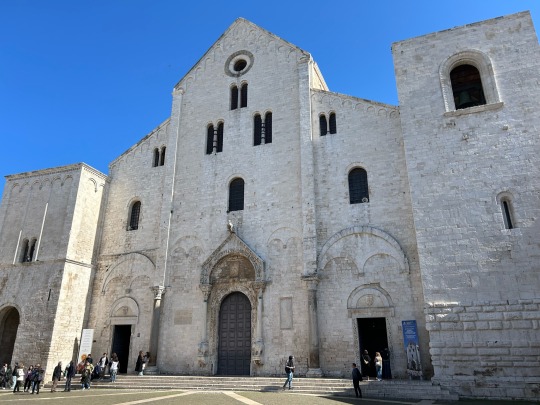


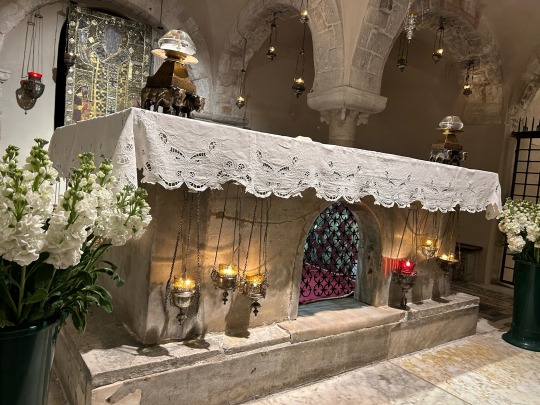
The Basilica di San Nicola in Bari, the final resting place of the St. Nicholas of Christmas fame.
March 9, 2024
#saint nicholas#saint nick#travel#architecture#church#church architecture#Bari#italy#Italia#original photography#lensblr#photographers on tumblr#photography#history#historical architecture#Puglia#Apulia#wanderingjana
25 notes
·
View notes
Text




Norman carvings from the Basilica of Saint Nicholas, Bari
2 notes
·
View notes
Text
08 works, Today, August 21st, is the Forefathers Abraham, Isaac, and Jacob's day, his story illustrated #233
Abel PannAbraham, Isaac, and JacobPastel on paper25 3/4 by 34 in. 65 by 86.5 cmPrivate collection Abraham is known as the patriarch of the Israelite people through Isaac, the son born to him and Sarah in their old age and the patriarch of Arabs through his son Ishmael, born to Abraham and Hagar-his wife Sarah’s Egyptian slave-girl… Please follow link for full post

View On WordPress
#Art#Bari#Bible#Biography#Christ#Classical#Constantine#footnotes#History#Icon#Icons#Jesus#Knights#Luca Signorelli#mythology#Nicholas#Realism#religion#Saint#Zaidan
2 notes
·
View notes
Text
SAINT OF THE DAY (December 6)

On December 6, the faithful commemorate a bishop in the early church who was known for generosity and love of children.
Born in Lycia in Asia Minor around the late third or fourth century, St. Nicholas of Myra is more than just the inspiration for the modern day Santa.
As a young man, he is said to have made a pilgrimage to Palestine and Egypt in order to study in the school of the Desert Fathers.
On returning some years later, he was almost immediately ordained Bishop of Myra, which is now Demre, on the coast of modern day Turkey.
The bishop was imprisoned during the Diocletian persecution. He was only released when Constantine the Great came to power and made Christianity the official religion of the Roman Empire.
One of the most famous stories of the generosity of St. Nicholas says that he threw bags of gold through an open window in the house of a poor man to serve as dowry for the man’s daughters, who otherwise would have been forced into prostitution.
The gold is said to have landed in the family’s shoes, which were drying near the fire.
This is why children leave their shoes out by the door, or hang their stockings by the fireplace in the hopes of receiving a gift on the eve of his feast.
St. Nicholas is associated with Christmas because of the tradition that he had the custom of giving secret gifts to children.
It is also conjectured that the saint, who was known to wear red robes and have a long white beard, was culturally converted into the large man with a reindeer-drawn sled full of toys because in German, his name is “San Nikolaus,” which almost sounds like “Santa Claus.”
In the East, he is known as St. Nicholas of Myra for the town in which he was bishop.
But in the West, he is called St. Nicholas of Bari because, during the Muslim conquest of Turkey in 1087, his relics were taken to Bari by the Italians.
St Nicholas is the patron of children and of sailors.
His intercession is sought by the shipwrecked, by those in difficult economic circumstances, and for those affected by fires.
He died on 6 December 346.
1 note
·
View note
Text



O good St. Nicholas, you who are the joy of the children, put in my heart the spirit of childhood, which the Gospel speaks, and teach me to seed happiness around me.
You, whose feast prepares us for Christmas, open my faith to the mystery of God made man. You good bishop and shepherd, help me to find my place in the Church, and inspire the Church to be faithful to the Gospel.
O good Saint Nicholas, patron of children, sailors and the helpless, watch over those who pray to Jesus, your Lord and theirs, as well as over those who humble themselves before you. Bring us all in reverence to the Holy Child of Bethlehem, when true joy and peace are found. Amen.
Nicholas: The Boy Who Became Santa (1990) dir. Fernando Uribe and Steven Hahn
#random stuff#catholic#catholic saints#saint nicholas#nicholas of myra#nicholas of bari#nicholas the wonderworker#san nicolas#santa claus
1 note
·
View note
Text

Bicci Di Lorenzo (Italian, 1373-1452) The Birth of St Nicholas Of Bari
#Bicci Di Lorenzo#catholicism#sacred art#catholic saints#st. Nicholas of Bari#san nicola di bari#fiorentin painters
0 notes
Text

St. Nicholas Day
St. Nicholas Day celebrates St. Nicholas, a popular minor Christian saint in Western and Eastern churches. In the fourth century, he was a bishop in Myra, a Greek town in the ancient district of Lycia, in Asia Minor, near present-day Demre, Turkey. The story of much of his life is not based on historical evidence, but on traditional stories and legends. It is believed that he was born in Patara, a seaport in Lycia, and that he traveled to Palestine and Egypt before coming to Myra. He was imprisoned for his beliefs by Roman Emperor Diocletian but was freed by Constantine the Great. He is believed to have been at the first council of Nicaea, and there are many legends that say he performed miracles for the poor. He was known for giving gifts and putting coins in people's shoes, and this influenced the way he is celebrated, as well as how other traditions during the Christmas season are celebrated.
St. Nicholas was buried in his church in Myra, and over the next few centuries, pilgrims began coming to his shrine. In 1087, his remains were stolen and taken to Bari, Italy. This increased his popularity in Europe, and Bari became a popular pilgrimage site. Most of his remains are still at the Basilica of San Nicola in Bari. His popularity continued to rise during the Middle Ages, but disappeared in most places except the Netherlands during the Reformation. His popularity has come back in Europe, and he has since become the patron saint of many places and people.
St. Nicholas Day is popular in Europe, particularly with children, because of the belief that St. Nicholas brings them gifts. Before the day, many European children place shoes or special St. Nicholas boots in front of fireplaces or outside of their front door at night. On the morning of the day, they receive small presents, such as candy, cookies, fruit, and small toys. Besides shoes or boots, presents are also placed in stockings, socks, or bags. In some countries, gifts are given on the eve of the day. In some European cities, especially those where he is the patron saint, the day is also marked with parades, feasts, and festivals. Some churches also have special services dedicated to the day.
Some in America also celebrate St. Nicholas Day. In the seventeenth century, the Dutch brought the tradition to New Amsterdam, which is now New York City. St. Nicholas had been called Sinterklaas in the Netherlands, and when he was brought to America he eventually became known as Santa Claus. During the nineteenth century, the Santa Claus we think of today came into his own. Similar to Sinterklaas in the Netherlands, Father Christmas of Britain is inspired by St. Nicholas. Another character, Krampus, is seen as being the evil companion of St. Nicholas.
How to Observe St. Nicholas Day
Children could celebrate by putting their shoes or boots in front of a fireplace or outside of their front door the night before the day. Stockings or socks could also be used. Parents could fill the shoes with small toys, candy, and other treats. Although the day is most celebrated by children and their parents, anyone can participate. You could even drop coins into people's shoes just as St. Nicholas did. Some cities have parades, feasts, and festivals which you could attend today. You could also plan a trip to the Basilica of San Nicola in Bari, where the remains of St. Nicholas are held.
Source
#St. Nicholas Day#St. Nikolaus#Samichlaus#Strasbourg#Alsace#France#fall 2010#day trip#Cathedral of Our Lady of Strasbourg#church#sculpture#original photography#tourist attraction#interior#6 December#SaintNicholasDay#StNicholasDay#6 December 343 AD#anniversary#history#Christmas time#travel#landmark
2 notes
·
View notes
Text




Bari, Puglia
#bari#bari puglia#puglia#apulia#italy#italia#travel#travel photography#photography#photographers on tumblr#architecture#culture#san nicolas#saint nicholas#art#sculpture#city photography#streets#urban#buildings#street photography#urban photography#urban landscape#cityscape#original photographers
17 notes
·
View notes
Photo

Grifo di Tancredi - The Crucifixion with Mary and Saint John; Saint Nicholas of Bari; Saint John the Baptist. 1300 - 1310
41 notes
·
View notes
Text
Bari, Puglia (Apulia region), Italy.
In the first photo, the writing on the structure reads: «San Nicola proteggici da le rizz vacand» that is to say «Saint Nicholas¹ protect us from empty sea urchins²».
_____________ 1. Saint Nicholas is the saint patron of the city of Bari. 2. Sea urchins are considered a delicacy by baresi (citizens of Bari).
Bari sei bella e incasinata






16 notes
·
View notes
Text

The Basilica San Nicola (1087-1197) in Bari, Italy, contains relics of Saint Nicholas brought here from Turkey in 1087.
4 notes
·
View notes
Text
Saints&Reading: Sunday, April 28, 2024
april 15_april 24
The Entry of the Lord into Jerusalem.
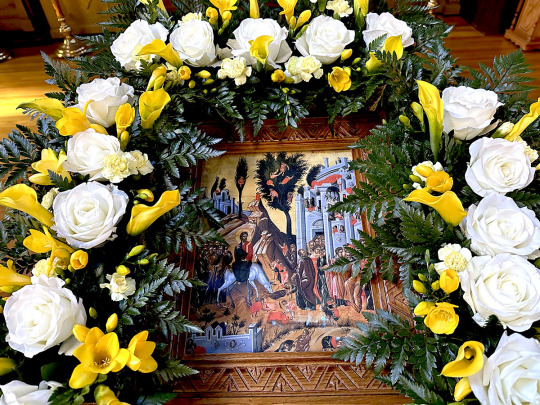
THE HOLY WOMEN MARTYRS BASILISSA AND ANASTASIA DISCIPLE OF THE HOLY APOSTLES ST PETER AND PAUL (1st C.)
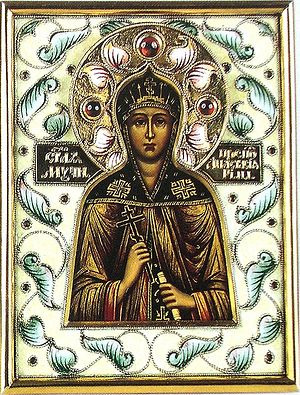
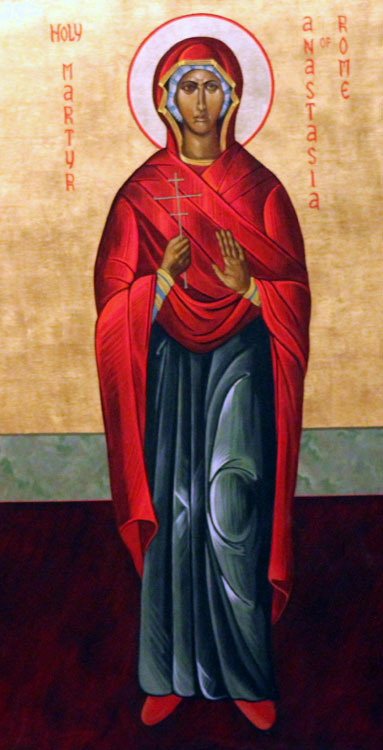
The Holy Women Martyrs Basilissa (Vasilissa) and Anastasia lived in Rome and were converted to Christianity by the holy Apostles Peter and Paul. They devoted themselves to the service of the Lord.
When the emperor Nero (54-68) persecuted Christians and gave them over to torture and execution, Saints Basilissa and Anastasia took the bodies of the holy martyrs and gave them reverent burial. Rumors of this reached Nero, so Saints Basilissa and Anastasia were imprisoned. They subjected them to cruel tortures: they scourged them with whips, scraped their skin with hooks, and burned them with fire. However, the holy martyrs remained unyielding and bravely confessed their faith in Christ the Savior. By Nero’s command, they were beheaded with the sword (+ ca. 68).
HOLY NOBLEBORN GREAT PRINCE MSTISLAV VLADIMIROVICH OF KIEV (1132)
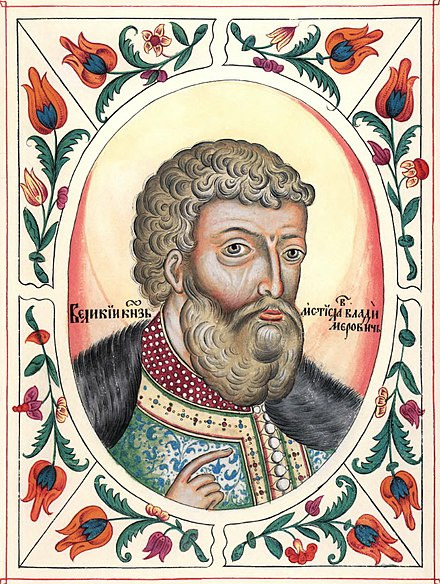
Holy Nobleborn GreatPrince Mstislav Vladimirovich (in Holy Baptism Theodore, or Feodor) was born on 1 June 1076. When he was 12 years old, his grandfather, the Kiev Great Prince Vsevolod (1078-1093), sent his grandson to be prince of Novgorod. The Novgorod people loved the young prince. In 1995, they expelled Prince David, who withdrew to Smolensk, and they went to Rostov specifically to seek Prince Mstislav.
After his grandfather’s death, Saint Mstislav occupied his appanage-land, the Rostov throne. At 19 years of age the young prince gained a brilliant victory over his uncle, the Chernigov prince Oleg. Prince Oleg had killed his brother Izyaslav and attacked Rostov and Suzdal', which belonged to Prince Mstislav.
The saint did not want to shed innocent blood. He wanted to make peace with his uncle and besought him to be satisfied with the rights to the city of Ryazan'. But Oleg had already gathered forces on a campaign against Novgorod. Prince Mstislav thereupon defeated him in a battle (1096), and Oleg, having lost out at Suzdal' and Rostov, barely managed to hold on at Murom.
Saint Mstislav again offered peace and asked only for the return of captives. Oleg agreed under a ruse, so Prince Mstislav dispersed his army. On the feast day of the GreatMartyr Theodore of Tyre, on Saturday of the 1st Week of Great Lent, he was quietly sitting down at Suzdal’ to eat when messengers brought him a word that Prince Oleg stood at the Klyaz'ma with an army.
In one mere day, Prince Mstislav regathered his army, and when his brother arrived 4 days later, he gave a new battle. Oleg, in fear, fled to Ryazan’, and Saint Mstislav set free the captives, went through the Murom lands, and he then reconciled Oleg with GreatPrince Svyatopolk (1093-1114) and with his own father, Vladimir Monomakh.
Thankful for the mercy of God, the saint in 1099 pledged to build a temple in honor of the Annunciation of the Most Holy Mother of God at Gorodischa near Novgorod. And especially just for this church was written the reknown Mstislavovo Gospel, the precious adornments of which were wrought at Constantinople.
In 1114, the saint pledged at Novgorod, a church in the name of Saint Nicholas. This temple was in gratitude to Saint Nicholas for his healing. During a grievous illness, the prince called out for help to Saint Nicholas, whose relics had been transferred to Bari shortly before this in Italy (1087, Comm. 9 May). Saint Nicholas, in a vision, gave orders to send to Kiev for his icon, indicating its form and measure. The people sent to bring back the icon were detained on the Island of Lipna by a storm raging there on Lake Il'men.
But on the 4th day, they found that same circular icon in the water, as indicated in the vision. The sick prince gave a kiss to the icon and received healing. And afterward, at the place of the icon’s appearance, on the Island of Lipna, a monastery with a stone church was built in the name of Saint Nicholas.
In 1116, the holy prince again campaigned against the Chud people. After a victory, he restored Novgorod the fortress – "he made a guarantee of Novgorod the Great" – and extensively built out the lodgings for the Novgorod principality. Then at his orders, the posadnik-mayor Pavel situated a fortress at Lake Ladoga, where a stone church was built in honor of the great martyr George.
In 1117, Great Prince Vladimir Monomakh (1114-1125) summoned his son to him as an assistant and transferred him to Belgorod. In 1123, holy Prince Mstislav confronted the Volynian prince Yaroslav, who was attempting to seize the Kyiv principality by leading against Rus’s Polish and Hungarian army.
In 1125, Great Prince Vladimir Monomakh died, and holy Prince Mstislav occupied the Kiev throne. During this time he gained a brilliant victory over the old enemies of Rus' – the Polovetsians, driving them beyond the Volga. Those of the Polovetsian princes, who refused to ally with Mstislav, were dispatched to Greece.
In 1127, Saint Mstislav swore to defend the Chernigov prince Yaroslav, who was banished by a nephew. The clergy and all the people besought him not to spill Christian blood. The holy prince obeyed, but until the end of his life, he bewailed that he had violated his kissing of the cross in this oath.
In 1128, GreatPrince Mstislav set the foundations of a stone church in the name of the GreatMartyr Theodore of Tyre (his patron saint) in memory of a victory gained over the Chernihiv prince Oleg. And in 1131, after a successful campaign against Lithuania, Saint Mstislav laid the foundations of a temple in honour of the Pirogoschsk Icon of the Mother of God. Holy Prince Mstislav died on 14 April 1132 during the Paschal Week, and he was buried in the temple of the Great Martyr Theodore, which he had built.
The holy prince was venerated even during his earthly life. The copyist of the Mstislavovo Gospel called him noble and a lover of Christ. The preparer of the settings of the Mstislavovo Gospel, Naslav, wrote about him: "Much toil and tribulation I experienced. But God did comfort me through the prayer of the good prince... God grant his prayer for all Christians". The vita-life of the holy prince was set under 15 April in the Serbian Divine-service Prologue of the XIII-XIV Centuries.
This Prologue was transcribed from the much earlier Bulgarian, the source for which was the Russian original. Likewise, under 15 April, Prince Mstislav’s vita-life appears in the Bulgarian Synaxarion of 1340. (Investigations have shown that the source of this synaxarion was likewise Russian).
In these Prologues, the memory of holy Prince Mstislav was placed alongside such reknown Russian commemorations as that of holy Equal-to-the-Apostles GreatPrincess Ol'ga (Comm. 11 July), and the holy Passion-Bearer Princes Boris and Gleb (Comm. 24 July). These facts testify to the wide veneration of holy Prince Mstislav in the Slavic lands.
© 1996-2001 by translator Fr. S. Janos.
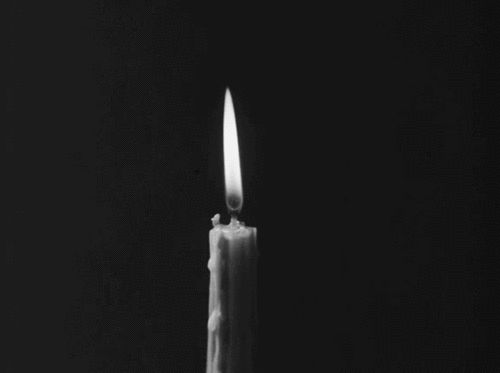
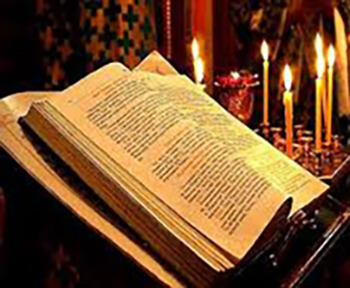
PHILIPPIANS 4:4-9
4 Rejoice in the Lord always. Again I will say, rejoice! 5 Let your gentleness be known to all men. The Lord is at hand. 6 Be anxious for nothing, but in everything by prayer and supplication, with thanksgiving, let your requests be made known to God; 7 and the peace of God, which surpasses all understanding, will guard your hearts and minds through Christ Jesus. 8 Finally, brethren, whatever things are true, whatever things are noble, whatever things are just, whatever things are pure, whatever things are lovely, whatever things are of good report, if there is any virtue and if there is anything praiseworthy - meditate on these things. 9 The things you learned and received and heard and saw in me, these do, and the God of peace will be with you.
JOHN 12:1-18
1 Then, six days before the Passover, Jesus came to Bethany, where Lazarus was who had been dead, whom He had raised from the dead. 2 There they made Him a supper; and Martha served, but Lazarus was one of those who sat at the table with Him. 3 Then Mary took a pound of very costly oil of spikenard, anointed the feet of Jesus, and wiped His feet with her hair. And the house was filled with the fragrance of the oil. 4 But one of His disciples, Judas Iscariot, Simon's son, who would betray Him, said, 5 Why was this fragrant oil not sold for three hundred denarii and given to the poor? 6 This he said, not that he cared for the poor, but because he was a thief, and had the money box; and he used to take what was put in it. 7 But Jesus said, "Let her alone; she has kept this for the day of My burial. 8 For the poor you have with you always, but Me you do not have always. 9 Now a great many of the Jews knew that He was there; and they came, not for Jesus' sake only, but that they might also see Lazarus, whom He had raised from the dead. 10 But the chief priests plotted to put Lazarus to death also, 11 because on account of him many of the Jews went away and believed in Jesus. 12 The next day a great multitude that had come to the feast, when they heard that Jesus was coming to Jerusalem, 13 took branches of palm trees and went out to meet Him, and cried out: Hosanna! 'Blessed is He who comes in the name of the LORD!' The King of Israel!" 14 Then Jesus, when He had found a young donkey, sat on it; as it is written: 15 Fear not, daughter of Zion; Behold, your King is coming, Sitting on a donkey's colt." 16 His disciples did not understand these things at first; but when Jesus was glorified, then they remembered that these things were written about Him and that they had done these things to Him. 17 Therefore the people, who were with Him when He called Lazarus out of his tomb and raised him from the dead, bore witness. 18 For this reason the people also met Him, because they heard that He had done this sign.
#orthodoxy#orthodoxchristianity#easternorthodoxchurch#originofchristianity#spirituality#holyscriptures#gospel#bible#wisdom#faith#saints
2 notes
·
View notes
Text
1 Religious Icon, Luca Signorelli's Saint Nicholas of Bari saving three knights, with footnotes #11
Luca SignorelliSaint Nicholas of Bari saving three knights from execution, Cortona circa 1450 – 1523Oil on panel10 5/8 by 8 3/4 in.; 27 by 22.2 cm.Private collection Sold for 176,400 USD in January 2022 The reign of Constantine The Great was not always stable. Borders had to be protected, laws enforced and if unrest broke out or even a sniff of conspiracy surfaced, Constantine also dealt with…

View On WordPress
#Art#Bari#Bible#Biography#Christ#Classical#Constantine#footnotes#History#Icon#Icons#Jesus#Knights#Luca Signorelli#mythology#Nicholas#Realism#religion#Saint#Zaidan
1 note
·
View note